Is your battered old wristwatch worth a fortune?

Originally associated with classic cars or motorcycles stored for years in sheds and outbuildings before being rediscovered and sold on for huge sums, the term ‘barn find’ has recently been adopted by the watch world.
A recent example is a Rolex Submariner, bought second-hand in 1970 for just £20 when the owner could not afford a new one. The watch is now set to sell for an estimated £150,000. Another story involves a pocket watch that was put into auction by its owner in order to raise £1,000 to help his local football team replace its changing room. The watch later sold at Christie’s for £60,000.
Although many barn finds are Rolex models, online horology magazine Hodinkee reported in 2015 on a Jaeger-LeCoultre watch that was picked up in a charity shop for $5.99. The watch was eventually sold by its ‘finder’ to noted San Francisco-based Rolex dealer and collector Eric Ku for more than $35,000.
According to Ku: “The Deep Sea Alarm that was found at the Goodwill Store in Arizona was from a very small batch of watches made by Jaeger-LeCoultre in 1959. It was the brand's first commercial attempt at a dive watch since Rolex introduced the Submariner several years earlier. It was interesting because unlike other dive watches of that era, it featured a vibrating alarm function. All in total, there were less than 1,000 examples produced, which makes them very hard to come by these days. The particular example was in exceptional condition, with most of its original attributes kept intact.”
Timepieces that have been worn daily or hidden away and forgotten, only to be unearthed decades later by family members or lucky bargain hunters, are turning up at auctions around the world, often with a provenance as interesting as their horological relevance. Knowledge gained through TV shows like Antiques Roadshow, plus the multitude of online horology resources now available, are making tales of such finds increasingly rare. However, when they do happen, as in these cases and the Rolex examples below, watches in all states of repair have been delighting owners with their secret values.
Christie’s New York, 6 December 2016
Rolex Oyster Triple Calendar Chronograph ref. 6036, circa 1954, US$499,500 (approx. £380,500)
One of the greatest joys for an auction house employee is to unexpectedly come face-to-face with an important discovery. And that is exactly what happened when this watch turned up at Christie’s, to be sold on behalf of the family of the original owner. The timepiece has a number of unique characteristics for a ref. 6036, including small seconds, minutes, and hour registers more usually associated with a ref. 6234.
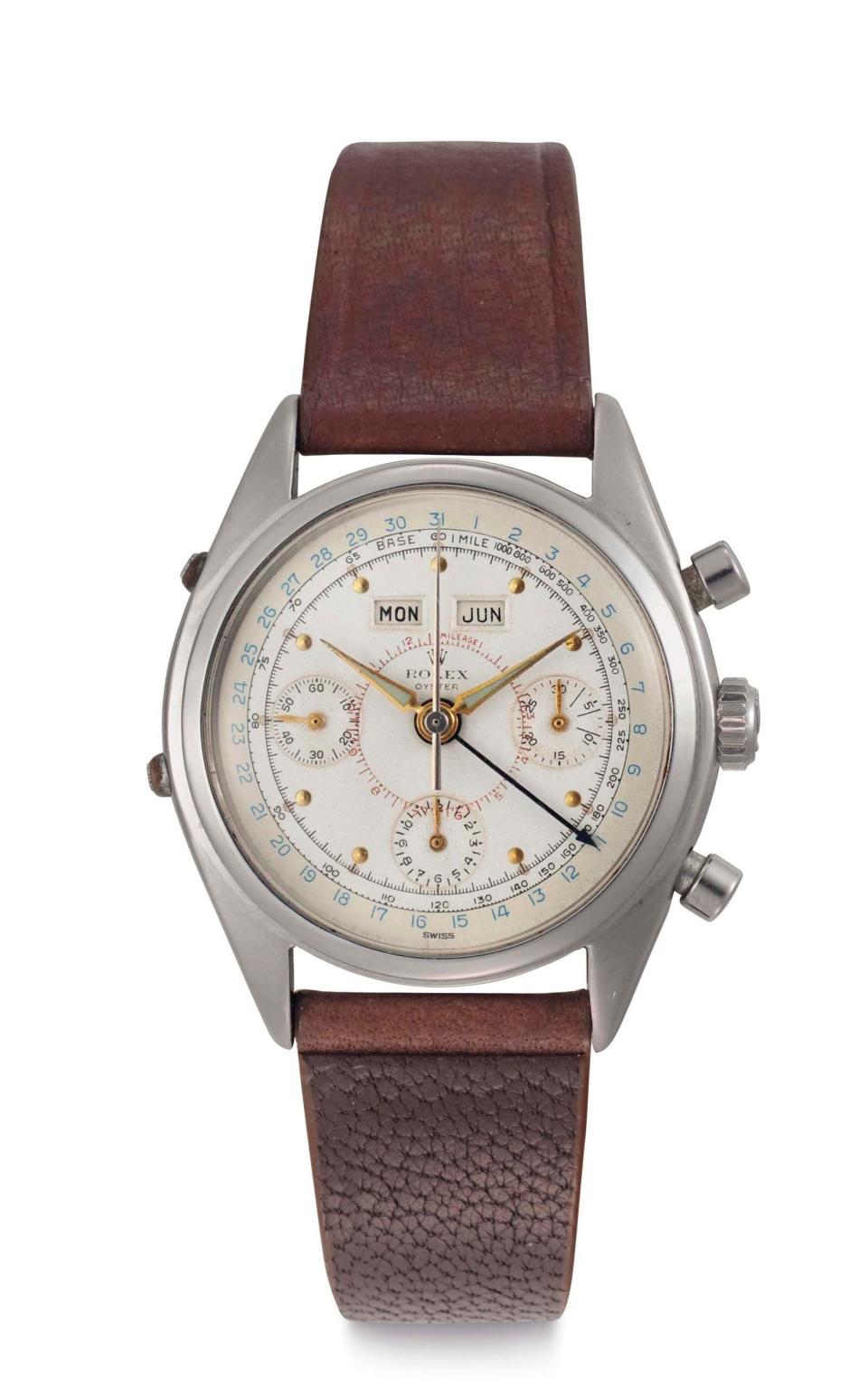
Owned by New York jeweller Leonard Shapiro, the watch was worn daily and had all servicing documents, although sadly other paperwork was missing. However, speculation was rife that the watch may have been created as a one-off for Mr. Shapiro. Its unique configuration was fundamental in the piece achieving five times its high estimate.
Sotheby’s Geneva, 13 May 2018
Rolex ‘Paul Newman’ Daytona ref. 6239, circa 1975, CHF 951,000 (approx. £797,000)
Bought in 1975 for £134 as a 25th wedding anniversary gift, this watch was kept in its presentation case along with its certificate and receipt plus a pound note that had been given in change at the time of purchase.
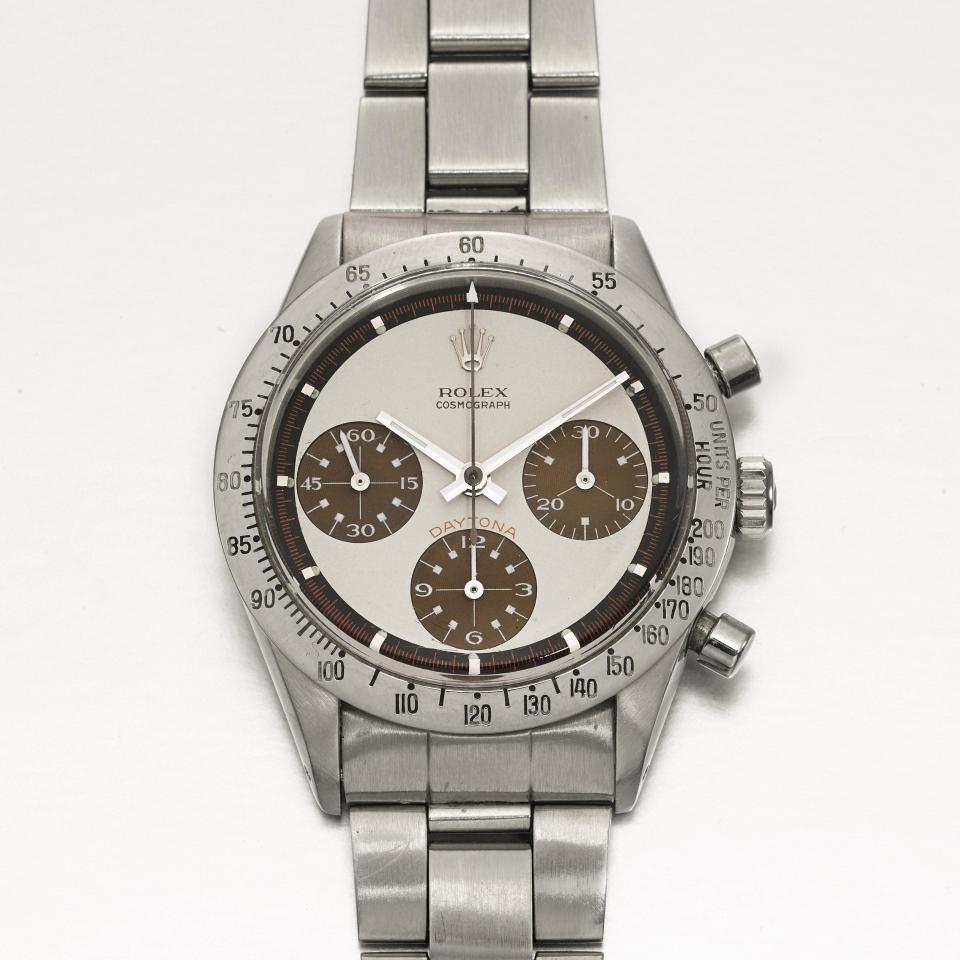
Childhood sweethearts, the couple involved had survived the Second World War and married in 1950, before time in India and Iraq while the husband was serving in the British army. The watch was treasured for 40 years but still, and to the owner’s dismay, the dial faded. Little did he know that, as Rolex watches became collectible, the patination would become one of the most covetable features in the vintage watch field. When sold, the timepiece fetched more than four times its low estimate.
Bonhams London, 12 December 2018
Rolex Submariner Explorer ‘Red Depth’ ref. 6538, circa 1956, £181,250
Selling for more than ten times its pre-sale estimate, this watch was not only original with a single owner – both hugely desirable among collectors – it also happened to be one of a handful presented to the crew of Sovereign, a boat that took part in the America's Cup in 1964.
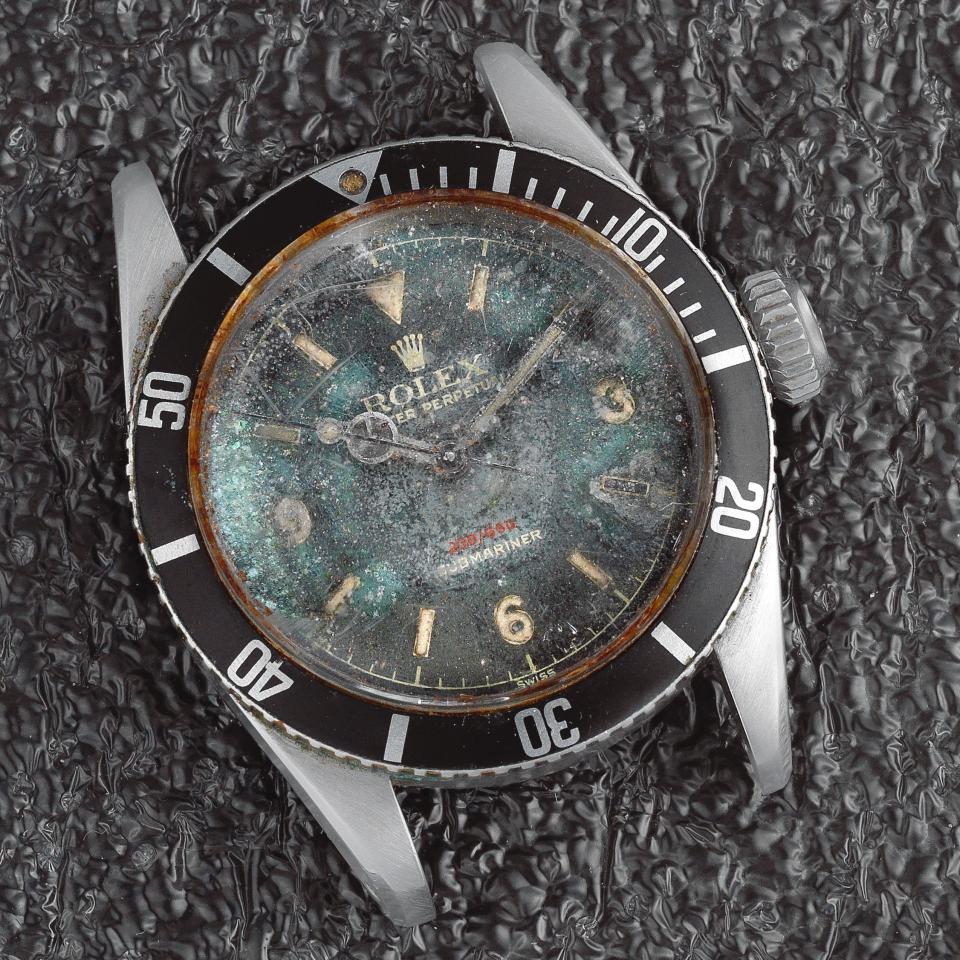
The watch was sold by the son of the owner and Jonathan Darracott, Bonham’s global head of watches, said at the time: “We had several very keen bidders registered all across the world, showing the continued demand for the very rarest and most original wristwatches rather than just those in mint condition.”
Sotheby’s London, 16 April 2019
Rolex Monoblocco chronograph ref. 3525, circa 1946, £40,000
The original owner of this watch, Sergeant Anthony O’Brien, has been name-checked in several books about Prisoner of War camps in Poland and Germany, including Stalag Luft III – An official History of the ‘Great Escape’ POW Camp by Howard Grehan and Howard Tuck.

Enlisted into the Kenyan Army in 1937, and later serving in the King’s African Rifles as a commissioned officer in Nyasaland and Abyssinia, Sergeant O’Brien volunteered for the newly formed British first SAS Brigade, 8th Army, Middle-Eastern Command, where he saw active duty in the North Africa Campaign. Captured behind enemy lines, he was transported through Italy to Stalag Luft III, Stalag Luft VI, Stalag Luft I and Stalag Luft 357. He was actively involved in the ‘Tally-Ho’ escape committee where he was in charge of tunnelling operations and camp security at Stalag Luft III before he was eventually liberated in 1945.
After the war he returned to Nairobi where he acquired this watch, a model well-known for having been supplied to British prisoners by Rolex during the war. The first Rolex chronograph fitted in an Oyster case, this particular piece is further distinguished by the rare ‘Dobbies Ltd Nairobi’ signature. As Sergeant O’Brien had lived and worked in Africa, heat and humidity had taken their toll and the watch was in poor condition before being restored and sold by his family.
Christie’s New York, 6 June 2019
Rolex Oyster Perpetual ref. 6062, circa 1948, US$175,000 (approx.£133,300)
Only 670 examples of ref. 6062 were produced in yellow gold, and less than 150 have since come back to market – even fewer with the luminous ‘Star Dial’. This piece is probably the earliest one ever produced, its serial number dating it to 1948 – two years before it was officially launched. Its chronometer number is ‘00002’, indicating it is the second of its kind to be made.
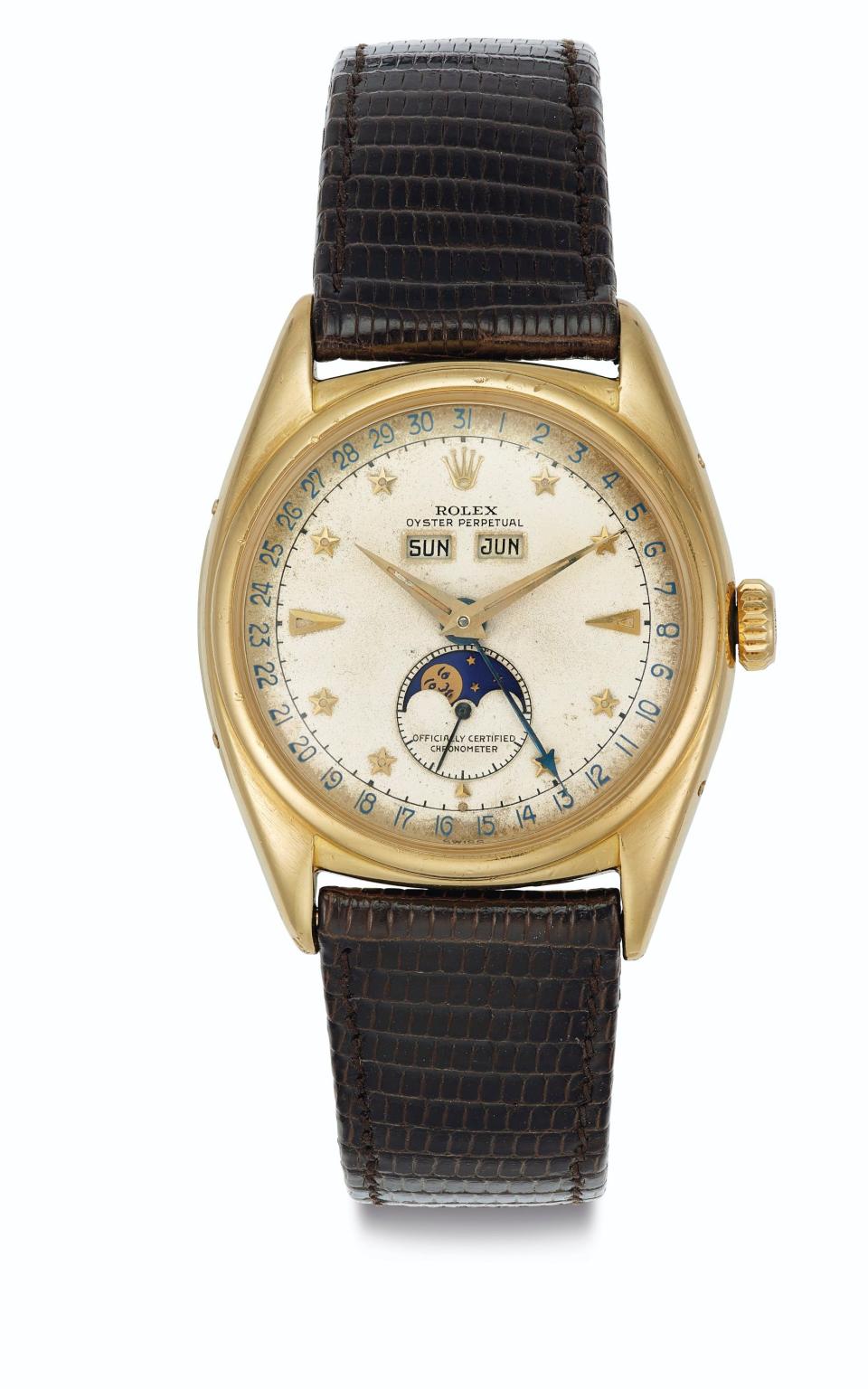
Introduced in 1950 and produced for approximately 10 years, the ref. 6062 is one of only two Rolex models to feature a triple calendar, the other being the ref. 8171 ‘Padellone’. These two models were the only watches ever made in series with moonphases, until 2018’s introduction of the Cellini ref. 50535. The difference between the two is that the ref. 6062 was housed in the Oyster case.
It is not clear how the owner, a contractor in Los Angeles in the 1940s, came to have this prototype, but after his death, as his granddaughter was clearing his house, she noticed that the curtains were unusually heavy. Closer examination revealed that the wristwatch her grandfather had worn daily had been sewn into the curtains for safekeeping – a common practice during the Great Depression.
Phillips New York, 10 December 2019
Rolex Submariner “Big Crown 4-Liner” ref. 6538, 1957, $100,000 (approx. £76,200)
The title of this New York auction was ‘Game Changers’ and it certainly proved to be one for the owner of this watch, who was convinced that he had inherited a fake until a watch-savvy friend convinced him to contact Phillips.
For centuries, the Great Lakes were the treacherous trade routes of North America, and as such they were the location for over 8,000 shipwrecks, 2,000 of them being in Lake Erie, where the salt-free, extremely cold water has preserved many sunken treasures. This timepiece was found by a diver 10-feet down in the Niagara River (which connects Lake Erie with Lake Ontario) in the mid-1970s. Tucked away in a drawer, the ‘fake’ was rediscovered by the finder’s son when his father passed away in 2018.

In production for just four years, the model was the first Submariner to be chronometer certified, which is reflected in its coveted four-line dial inscription. It was also the watch favoured by Sean Connery’s James Bond in Dr. No, From Russia with Love and Goldfinger, leading to its nickname 'the James Bond Submariner' among Rolex collectors.
Bonhams London, 11 December 2019
Rolex Cosmograph Daytona ref. 6265/6263, circa 1980, £375,062
While the Daytona is a model known to set collectors’ pulses racing, in the world of vintage Rolex, a previously unknown dial or exceptional provenance can send prices spinning into the stratosphere.
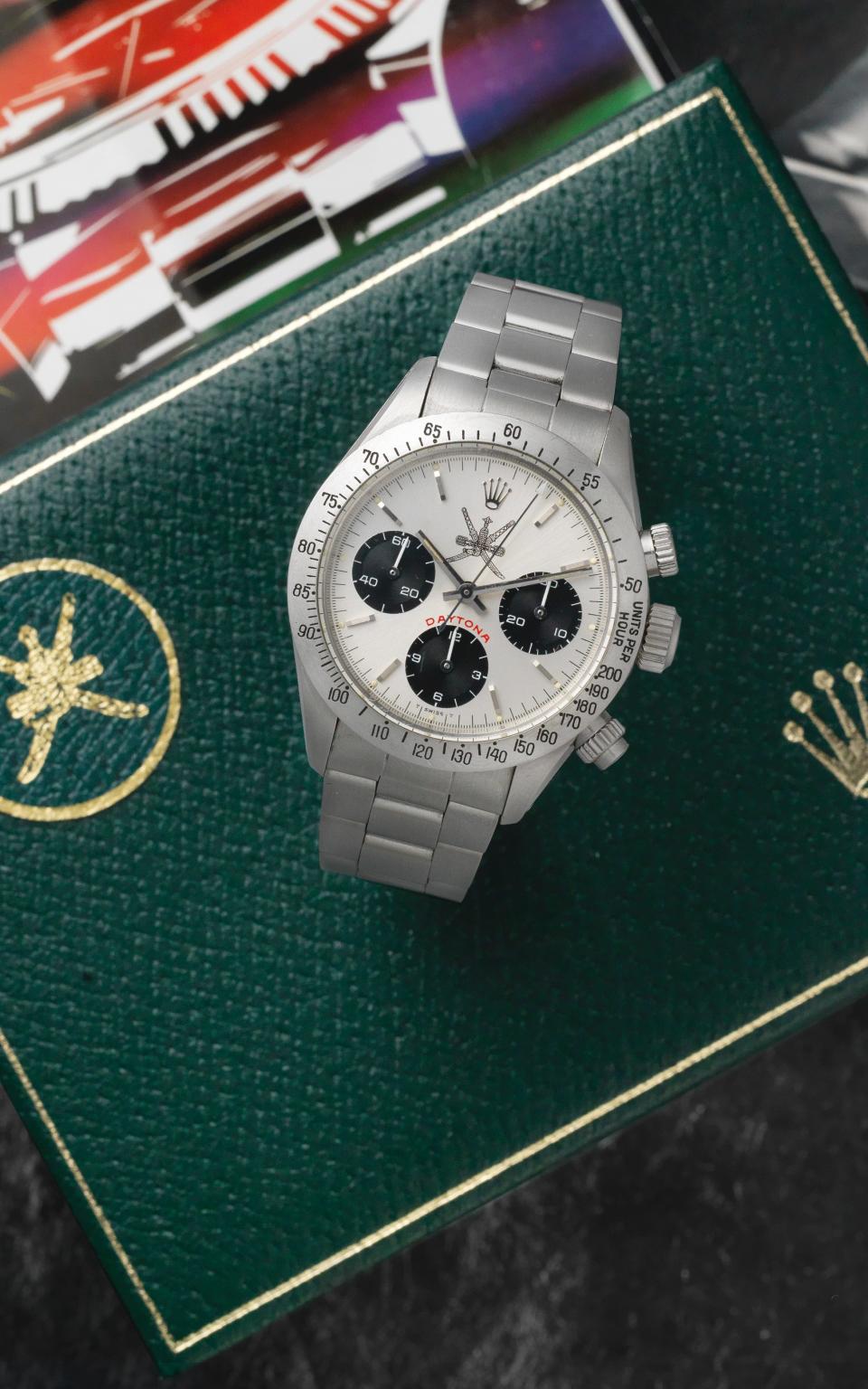
At the time of its sale, this example was only the second known Daytona of its type to feature this particular Omani Khanjar dial configuration, and represented a remarkable piece of military and watchmaking history. Unsurprisingly to Rolex experts, the watch fetched eight to ten times the price of a standard manual winding, steel Daytona from the same era.
The watch’s original owner, David Wood, joined the RAF in 1943 and had a distinguished 40-year flying career that saw him eventually heading up the Sultan of Oman's Air Force operations in the north of Oman for 10 years. He came to be the most senior SOAF officer, a rank known as Aqeed Tayyar, and was gifted the watch by the Sultan of Oman in the early 1980s. The watch was sold by Wood’s son.
Sign up for the Telegraph Luxury newsletter for your weekly dose of exquisite taste and expert opinion.

